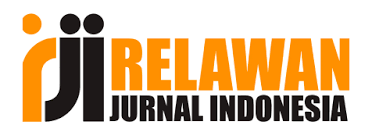The History of Irrigated Farming in Central Fergana Deserts (On The Example of 1951-1970)
DOI:
https://doi.org/10.17605/cajssh.v6i3.1188Keywords:
Ferghana Valley, Great Ferghana Canal, Sirdarya, Land Reclamation, Steppe, Agriculture, Irrigation, Collector, Cubic MeterAbstract
Irrigation has historically played a pivotal role in transforming arid regions into productive agricultural zones, particularly within the Soviet Union’s strategic development plans across Central Asia. The Central Fergana desert region of Uzbekistan witnessed extensive irrigation efforts between 1951 and 1970, aimed at supporting cotton cultivation as part of the USSR’s broader economic agenda. Despite the importance of these interventions, comprehensive historical analyses of the organizational structures, financial mechanisms, and infrastructural advancements behind the Central Fergana irrigation projects remain limited. This study aims to examine the Soviet Union’s irrigation and land reclamation strategies in Central Fergana by analyzing archival materials and historical records, with a focus on the establishment and evolution of the Inter-Collective Farm Council and the construction of key water infrastructure. The findings reveal that the development of irrigation in Central Fergana was largely driven by collective farm investments and coordinated through specialized institutions such as “Ferganavodstroy.” The initiative progressed in three phases, culminating in the construction of the Great Andijan Canal, which significantly enhanced the irrigation capacity for over 140,000 hectares of land. This research highlights the Central Fergana irrigation campaign as a unique case where decentralized labor and financial resources from collective farms were mobilized for large-scale state-directed agricultural modernization. The study offers valuable insights into the socio-economic and institutional dynamics of Soviet-era land management, providing a historical precedent for current and future irrigation strategies in similarly arid and resource-dependent regions.
References
A. G. Abunabiyev, By Decree of the Leader. Tashkent, 1970.
A. Gafurov and F. Shamsutdinov, Central Fergana – Flourishing Oasis. Tashkent, 1980.
Communist Party of Uzbekistan in Resolutions... Vol. 2. Tashkent: Uzbekistan, 1988.
Communist Party of Uzbekistan in Resolutions... Vol. III. Tashkent, 1988.
Conquering the Hungry Steppe. Tashkent: Uzbekistan, 1980.
CPSU in Resolutions and Decisions... Vol. 9. Moscow, 1986.
Q. M. Nasritdinov, «Development of Irrigation and Reclamation Construction in Uzbekistan and Its Socio-Economic Consequences (1981-1990)», Candidate of Historical Sciences Dissertation, Andijan, 1994.
K. M. Narinsky, Flourishing Virgin Land. Tashkent, 1965.
I. Alimov and others, Implementation of Lenin’s Ideas on Irrigation in Central Asia. Tashkent, 1986.
A. A. ugli Mamajanov, «Implementation of the initial modernization processes in the agrarian policy and land-water issues of The Soviet government (In the Case of the Fergana Valley)», EPRA International Journal of Multidisciplinary Research (IJMR), 2023.
S. T. Tileukulov, Irrigation in the Service of the Food Program. Tashkent: Uzbekistan, 1984.
Irrigation of Uzbekistan, Vol. I. Tashkent, 1975.
Materials of the 23rd Congress of the CPSU. Tashkent, 1966.
Materials of the conference of cotton-growing workers of Central Asia, Transcaucasian Republics, and the Kazakh SSR. Tashkent, 1955.
Materials of the May Plenum of the CPSU Central Committee. Moscow, 1966.
«Red Uzbekistan», Red Uzbekistan, 1952.
A. A. ugli Mamajanov, «The research of history of land irrigation in Central Fergana», EPRA International Journal of Research and Development (IJRD), вып. 12, 2023.
«Uzbekistan National Archive, Collection 2483, Inventory 1, File 1722, Sheet 10».

















